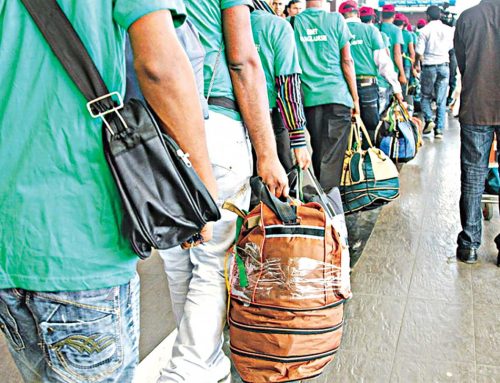The Bangladesh Small and Cottage Industries Corporation (BSCIC) has sent a proposal to the industries ministry for taking a project that will make the Central Effluent Treatment Plant (CETP) at the Savar Tannery Industrial Estate (STIE) fully functional.
It will take between Tk 500 crore and Tk 800 crore for the proposed project, which includes setting up a shed for solid waste management on 200 acres of land on the southside of the CETP, BSCIC Chairman Md Mahbubor Rahman said yesterday.
The BSCIC decided to take up the project as Bangladesh is yet to reap the full benefit from the much talked about CETP despite spending Tk 565 crore and waiting nearly a decade.
The facility now requires renovation or reconstruction as the Chinese company that built the facility handed over an incomplete CETP to the newly formed Dhaka Tannery Industrial Estate Waste Treatment Plant Company (DTIEWTPC) in July 2021.
Asked whether the BSCIC would investigate anomalies that took place in construction as the CETP is still not fully functional, Rahman said it is simply embarrassing to investigate further into the matter.
Rahman was speaking during a seminar of the Institute of Leather Engineering and Technology (ILET), which discussed findings in research and development for the leather tanning process and solid waste management.
The event was jointly organised by the ILET, University of Dhaka and The Asia Foundation at the Nawab Ali Chowdhury Senate Bhaban in Dhaka.
The construction of the CETP began in 2013 and the Chinese company in charge of implementation handed it over to the DTIEWTPC without completing construction.
The BSCIC chief is hopeful about making the CETP functional while also constructing the solid waste management field within two years if the project is approved.
Without a fully functional CETP, local companies will not be able to obtain Leather Working Group (LWG) certification, which is a must to attract international retailers and brands in the leather sector.
This means the country will continue to be deprived of valuable foreign currencies as local tanners cannot get higher prices for tanned leathers owing to a lack of compliance. Meanwhile, the makers of finished goods cannot export products made using leather produced in the country.
This is unfortunate for Bangladesh as leather is among a handful of products that offers exporters the scope for nearly 100 per cent value-addition as raw materials are entirely available in domestic markets.
Another price being paid for the lack of a well-equipped CETP is that the environment around the STIE is being polluted.
Mohammed Mizanur Rahman, director of the ILET, said it is not possible to go ahead with the existing CETP as it was constructed without following the proper design.
Besides, the technology used in building the CETP is not valid in most parts of the world nowadays.
Citing a paper of the ILET, Rahman said it is possible to reduce chemical usage in the washing of rawhide by 30 per cent using enzymes innovated by their researchers.
It is also possible to produce biodiesel and fertiliser from rawhide waste, he said, adding that his institute has already applied for a patent on the innovation.
Md Shakawat Ullah, general secretary of the Bangladesh Tanners Association (BTA), said tanners currently pay Tk 1 crore as an electricity bill for using the CETP, which means the facility is running.
However, the solid waste management facility is less than 1 per cent operational, he added.
Md Akhtaruzzaman, vice chancellor of the University of Dhaka, said the production of biodiesel from rawhide waste is also producing green energy.
The leather and leather goods industries have been playing a vital role in the economy, which must not be marred by bureaucratic tangles, he added.
Kazi Faisal Bin Seraj, country representative of The Asia Foundation, also spoke at the seminar.
July 8th, 2023
Share This Story, Choose Your Platform!



